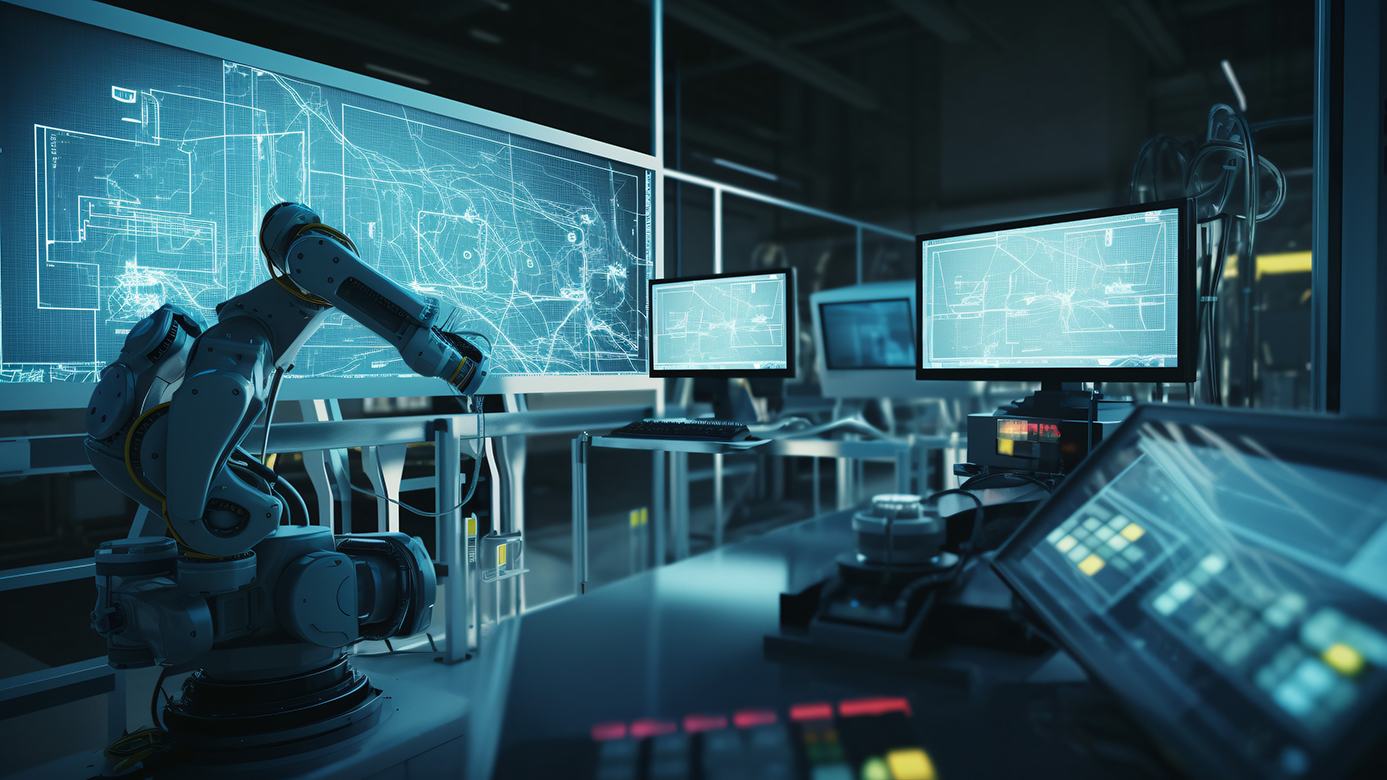Self-Driving Labs (SDLs) are laboratories where material synthesis and characterization are carried out by robots, with AI models intelligently selecting new material designs to test based on previous experimental results. This capability reflects the remarkable progress made in the fields of data analytics and AI, together with the emergence of more affordable robotic technology. SDLs have the potential to revolutionize research and development efforts related to critical minerals and materials science.
The development and adoption of alternative and new materials is central to U.S. leadership in emerging technologies. Critical materials are required for manufacturing a variety of advanced and efficient technologies, including wind turbines, and aerospace and defense equipment. Advances in materials increase performance, reduce power consumption, lower costs, and drive new paradigms for advances in clean energy technology, biochemistry, and microelectronics. At issue, however, is whether the United States is devoting sufficient policy attention and resources to securing the advantage in SDLs.
A Key Tool for Advancing Materials Research
SDLs enable researchers to explore designs rapidly and optimize new materials that they may have not otherwise considered. Research organizations including the University of Liverpool, Argonne National Lab, and Carnegie Mellon University are beginning to build SDLs. For example, University of Liverpool researchers in 2020 used a mobile platform robot arm to synthesize and search for catalysts across 10 design parameters, ultimately conducting 688 experiments over eight days completely autonomously and identifying chemical formulations that were 6 times better than the baseline.
SDLs have several important advantages over the current methods for materials science experimentation. First, they can significantly improve the labor productivity of scientific enterprises, freeing highly skilled workers from menial experimental labor and allowing them to craft new theories or distill novel insights from autonomously collected data. Additionally, SDLs also yield more reproducible outcomes. Rather than a graduate student having to read a paper and attempt to replicate the experiment by hand, procedures can be encoded and executed by the software driving the robot arms.
Stepping up SDLs
U.S. policymakers should pay closer attention to this emerging technology platform. At present, the United States does not have a clear funding policy or program for advancing SDLs. While Lawrence Berkeley National Lab and Argonne National Lab have directed some internal and DOE funding and a few researchers have received NSF Career grants related to their SDL work, total U.S. spending on SDLs is less than $50 million and not done in a directed, programmatic manner. By comparison, Canada recently awarded $200 million to the Acceleration Consortium at University of Toronto to develop SDLs, their largest ever research grant.
Stepping up the development of this strategic technology will require congressional authorization and directed allocations from specific program offices in science funding agencies. These actions should be guided by a research strategy that deploys SDL platforms at selected universities and national labs in order to allow materials scientists and researchers a better understanding how to fit experimental automation into the often messy and stochastic process of material discovery.
SDL Grand Challenge
In order to ensure that such scientific funding is yielding actual scientific insights, this research funding should be programmatically paired with an SDL Grand Challenge, where SDLs must demonstrate state-of-the-art material designs within specific material chemistries and applications in a set time horizon. The May 2023 report on AI for Science, Energy, and Security, released by a consortium of Department of Energy (DOE) national labs, specifically highlights AI for autonomous discovery and contains a robust starting framework for such a research agenda.
This SDL Grand Challenge would be similar in concept to how Defense Advanced Research Project Agency’s (DARPA) 2004 Grand Challenge laid the foundation for the U.S.'s leading position in self-driving cars. DARPA, the Department of Defense’s innovative science funding arm, created a real-world autonomous vehicle test bed for teams to compete for prize funding and advance the state-of—the-art. This challenge included a $2M prize and a little under $8M in operating cost to run, a fair bargain for laying the seeds for decades of advances and private investment in both AI and automotive hardware for self-driving cars.
The SDL Grand Challenge could similarly fund teams to run test beds of SDLs to advance the state-of-the-art in various material fields and could be funded by the Advanced Research Project Agency for Energy (ARPA-E), the cousin to DARPA in the Department of Energy. Just as the U.S.’s lead in AI has led to a wealth of innovation in self-driving cars, the U.S.’s strong technical base in cutting-edge AI, in combination with advances in robotics, can be leveraged into a competitive flywheel for materials discovery and innovation.
Charles Yang is a Machine Learning Engineer and former researcher at Lawrence Berkeley National Lab, working on autonomous labs. He is currently an ORISE fellow at the Department of Energy. Hideki Tomoshige is a research associate with the Renewing American Innovation project at the Center for Strategic and International Studies in Washington, D.C.

Self-Driving Labs: AI and Robotics Accelerating Materials Innovation | Perspectives on Innovation | CSIS
Self-Driving Laboratories (SDLs) contribute to U.S. technology leadership by enhancing productivity in materials science and reshaping critical minerals research.

